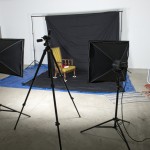Images & article by Kevin Thomas

Editorial Photo: Disney World Indiana Jones
Many people entering the world of microstock photography have a difficult time understanding the different between images that can be used for commercial purposes versus editorial. The answer is actually so easy and obvious that it becomes difficult to explain. It’s almost like someone asking you how to breathe. You just “breathe,” right?
OK… Let’s say you photograph a man standing in the middle of a street. If you want to use that image for commercial endeavors, then you will need the man to sign a Model Release form. By signing the form, the man is giving his consent for the image to be used for commercial purposes. If he does not sign the form, then it can only be used for editorial.
Most photographers are aware of model release forms but they still do not understand how this particular image floats in the realm of commercial or editorial. Look at it this way: If the image is editorial, then you can only state what is factual about the image. “Here is a man standing in the middle of a street. The man is walking in a neighborhood with houses. The man is wearing blue jeans and has a mustache.”

Editorial Photo: Workers, Laborers Haul Goods to Market in India
That is essentially what makes an editorial image, you are providing an image of a factual situation. People at a sporting event, a city scene, a famous person at an event, you see these types of images all the time. Editorial images provide a visual context for the viewer in relation to a particular event, setting, thought, situation, etc.
Let’s clarify this a bit more and go back to our picture of the man in the street. Is the man scary looking? Is he ugly? If you’re an insurance company and you want an image for a brochure promoting homeowner insurance, you might want a picture of a scary, ugly man prowling the neighborhood. If you use this image and caption it “Is Your Home Safe,” you are now implying the man is dangerous. The man could be a criminal or some kind of nut.
Since the man did not sign a model release form, he has not consented for having his face being used to sell insurance. The brochure implies you need to protect yourself from crooks such as this man. If you are representing the man to be a bad person, you have crossed the line from editorial to commercial. If you want to capture a scene of a scary, dangerous crook, then you will need to hire a model or buy some beers for your brother-in-law, anyone who is willing to create this concept for you and sign a model release. The model has to consent to representing whatever your idea is to portray.

Grand Bazaar, Istanbul, Turkey, Travel Destination
In this case we are suggesting the model to be a bad person. However, the character of the man is not the only thing to consider when understanding the differences between commercial and editorial images. If we print the picture of the man in the street and say “This man enjoys drinking Coca Cola,” again we are going beyond the basic facts on the image. If the man is actually drinking a Coke, we still can’t use the image for promoting a soft drink if he has not signed a model release form.
If you want to use an image for commercial purposes, then you have to think in terms of what the character of the subject may be and what the person may be promoting. We all know the people in TV commercials are paid actors who may have never used a particular product. Yet these actors are promoting and endorsing the product anyway. In these cases the company is using actors to represent customers who use and enjoy their product. You might see a TV commercial of a dishonest auto mechanic with the suggestion you go to a particular garage where you will get a fair deal. Is the auto mechanic in the commercial really shady and dishonest? You already know the answer to that question, he’s a paid actor who signed a release form.
Has this helped for understanding the difference between an image that can be used for commercial versus editorial? An editorial image can only be used for portraying a set of facts. If you photograph your neighbor cutting the grass, it’s a neighbor cutting the grass. Mundane scenes have virtually no use for editorial which is why you never see them. The more common editorial images you usually see have already been mentioned above. If the person(s) in your image sign a model release form, then they are agreeing their image can be used to promote a product, idea, or concept. Which is why people work as models, in return for their likeness to be used, they generally expect some sort of compensation. Hiring models and paying them, that would be the subject of another blog.

Editorial Photo: Chinese People Exercise, Xingqing Park Xian China
The subject of editorial versus commercial use of images can actually become more complicated depending on certain situations. Laws can vary from one country or another. There have also been instances where a model signed a release form and still took the phootgrapher to court because of how an image was used. These are advanced topics but suffice to say, if you now understand the fundamnetal difference between editorial and commercial images, you’ll be off to a good start.











